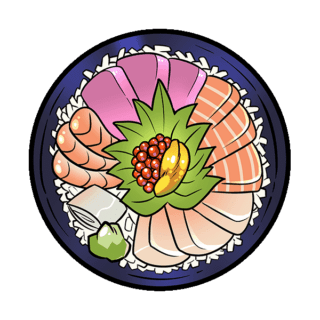Sashimi
Because this is a simple dish where it’s just about the richness and quality of one ingredient, you want your palate to be neutral and able to experience all the depth of flavor and texture of the fish. For this reason, when eaten in a multi-course meal, sashimi is served as the first course to allow diners to fully appreciate its flavor without the influence of more complex dishes.
To cleanse your palate between bites, sashimi is often served with a side garnish of thinly-sliced daikon radish. Typically, fish slices are lightly dipped in soy or ponzu sauce as well. This adds a hint of tanginess and umami, complementing the meaty and protein-rich flavor, and depending on the fish, its iron rich profile.
While the butchering of the fish must be done with immense care for not only safety reasons, but also to ensure precise cuts to best enhance the texture and flavor of the fish, or other meat of choice. This can range from a mid-thickness around half a centimeter to a super thin slice.
Now, like we alluded to above, there are times where you’ll find non-fish raw or barely-seared meat on a sashimi menu. That can include beef, other red meat, and even chicken! Of course you’ll almost certainly only find these done by extremely highly-specialized chefs, since there’s extra potential — especially for poultry — for pathogens to take hold if improperly prepared.
Overall, sashimi is arguably the purest to experience the depth of a meat’s flavors and texture, untainted by other ingredients.
At Uwajimaya, you will find a wide selection of sashimi blocks ready to slice as well as sashimi slices in our seafood department.





